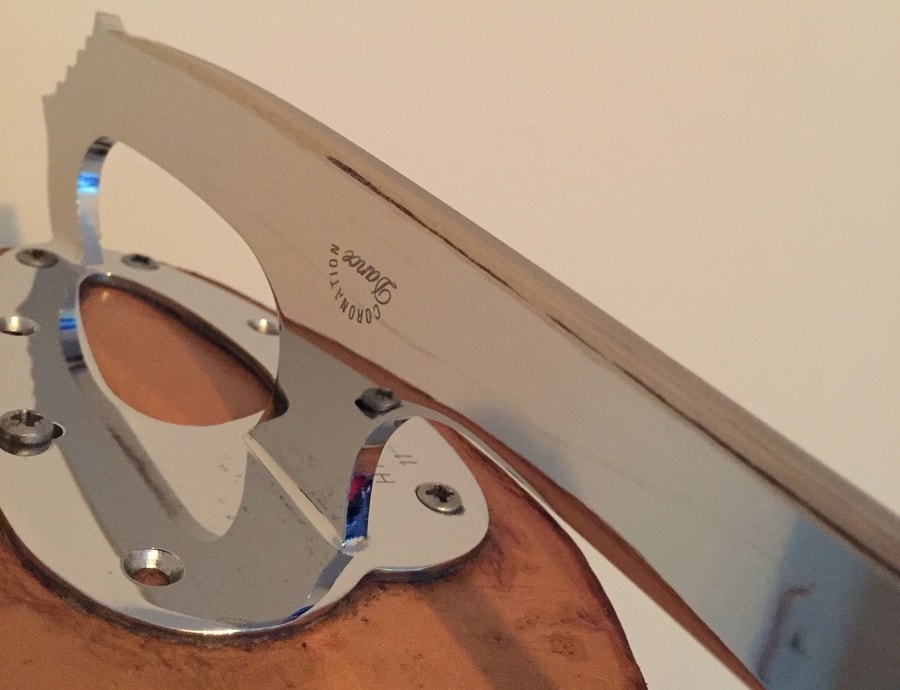It took me ages to work out how often I should get my ice skates sharpened. It’s important to have your blades the correct level of sharpness, but how often should that be? And what exactly is the correct level of sharpness? I have been researching, talking to people that sharpen blades as well as coaches. This is what I have found.
Buy John Wilson blades from figureskatingstore.com

How often you sharpen your skates depends on what kind of skater you are and what exactly you are doing on your blades and your weight. It also depends on how sharp you like your blades to feel. Generally speaking, around 30 – 50 hours on ice, by then they may need sharpening. If you are like me and aren’t a fan of super sharp blades, then you will edge towards the 40 – 50 hour mark (around every 2 to 3 months if you skate 3 times a week). Or if you like to keep your skates like razors, then opt for the 30 hours end of the scale (about every 6 – 7 weeks if you skate for 1 ½ hours, 3 times a week)
What are the different types of cut or grind you can have on your blades?
There are many different types of grind when sharpening ice skates. Knowing which one is for you will make a huge difference to your skating. The type of grind that you choose will affect the way that the blade handles on ice. It will affect stopping and turning. It will also affect landing jumps, edge work and speed. So there is great importance when it comes to which grind you choose. There is also the question of how sharp you would like your blades to feel and how long you would like the edge to last before the next sharpening.
Before you throw in the towel on the complexities of it all, let me explain how it works.
How to protect your blades once sharpened
Once you have got your blades just how you want them, protect them. You don’t want to be walking around the rink, stepping on all kinds of bits of gravel and debris walked in by people. You should seriously consider getting yourself some blade guards. Rockerz are simply the best in the business, they are made specifically for your exact blade type and size. They are easy to walk in due to the patented Rockerz design and you wont believe what you can do with the color options. They are reasonably priced for such a great build. Check them out here on Amazon. (Link to Amazon – Commissions earned)
Common use of some of the Radii (Radius of hollow) available
Ice dance (competitive) – ⅜” – 7/16”
Basic skating – hockey and figure ½”
Beginner – ⅝”
Recreational – ¾”
Hockey goalie – 1” – 1 ½”
What are the best sharpening radii (radius of hollow) for beginners?
For beginners that aren’t doing advanced edge work or landing jumps, you are better off going for a larger radius of hollow. This will make it easier to learn to stop. A ½” is as deep as you want to go, you could start off shallower still at ⅝”, then progress to a ½”, moving on to deeper radii as there skill advances.
What are the best sharpening radii for ice dancers?
A ½” grind is fine to start out in ice dance, in fact there are many advanced ice dancers that still use a 1,2” grind. Many however progress to a 7/16” or even a ⅜” (depending on their weight) as there skill level progresses and more complex footwork and deeper edges are required.
Let’s get rid of a common myth!
There are many people that ask for their skates to be sharpened not too sharp, as they don’t like the feel on the ice. This is a common misconception. You can’t sharpen skates ‘not too sharp’, or to put it another way, you can’t sharpen them blunt. O.K so somebody who doesn’t know what they are doing can do a poor job, but when they have been done properly, all skates are sharp when they have been sharpened regardless of what radius of hollow you have asked for. What you should actually ask for is a larger radius of hollow if you want to feel the edges digging less in the ice.

Understanding how ice skates are sharpened
A blade is sharpened by grinding away some of its surface to reveal a sharp edge on either side of the blade. The grinding is done by a rotating grinding wheel, usually whilst the ice skate is clamped into a jig. The shape of the grinding wheel dictates the type of grind. Before sharpening your skates, the person sharpening them will pass a diamond cutting bit over the grinding wheel. This will shape the grinding wheel with a certain curve. When the curved grinding wheel touches the blade, it will create the same shape on the surface of the blade. This is called the radius of hollow. One curvature on the grinding wheel will give a ½” grind, the other a flat or 7/16” and so on.

What/where is the radius of hollow?
This refers to the curve or hollow ground into your blades by the grinding wheel. If you look along the edge of your blade, you will see that it has a slight curve running down the length of the blade. The best way to see this, is if you hold your ice skate upside down, with the blade facing upward. Now hold the ice skate at eye level with the toe rake facing away from you (you don’t have to be too close to it, don’t get the blade too near your eye, we don’t want any injuries!). Now look down the length of the blade from the heel end to the toe end. You will see that the blade has a slight concave to it (a downward facing curve in the blade). This is the radius of hollow.
In fact whilst you are there you might as well check out the edges running down each side of the blade. Now you can see them, you can imagine that, the deeper the hollow in the down the length of the blade, the more those edges are going to stick up. This is why the deeper the radius of hollow, the more you feel your edges.
Why is it called the radius of hollow?
It’s called the radius of hollow because the edge of the grinding stone has a curve on it. That curve is formed from the radius of a bigger circle. When the grinding stone sharpens the blade, it leaves the same curved shape on the surface of the blade. This surface is concave, the opposite of the grinding wheel which is convex. So the skating edge of the blade has now been sharpened with the same radius that was on the grinding stone, in the shape of a hollow. Hence why it is called the radius of hollow.
The bigger the radius, the shallower the hollow. The smaller the radius the deeper the hollow. As an example, a truck wheel has a large radius, so a gentle curve around the wheel. A skateboard wheel has a small radius, so the curve around the wheel is much greater. The greater the curve on the grinding wheel (small radius) the deeper the hollow you get on your blade.
What’s the difference between the different grinds?
Starting from the flattest and going to the most concave, the the grinds proceed in the following order:
- First there is the flat grind (usually used by speed skaters). This is done with a wheel with a flat surface. This leaves the blade with a flat surface.
- Then you go to grinds like the one inch or two inch, this leaves you with a gentle hollow on the blade.
- Then you get loads of grinds that are less than one inch. These are given a name as a fraction (as they are less than one inch). These are grinds like the ½”. I have gad this grind, i like it actually, then the 7/16ths, I have this grind on at the moment, feels allot edgier to me, allot more precise (this may not be true to you, this is true to me because of my weight and skating style), then the fractions go on and on getting smaller and smaller. There are also allot of grinds in between the fractions i have listed, but you get the picture.
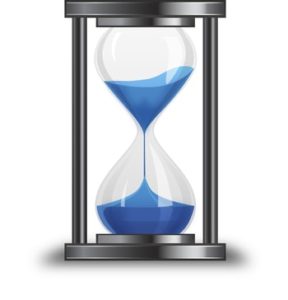
What grind will last the longest?
The deeper the grind (smaller radius of hollow) the deeper the hollow will be and the thinner more fragile edges will be prone to wear and damage. The flatter the grind, the longer it will last. The larger radius of hollow, the less fragile the edges will be, so will last longer. In other words, the deeper the grind, the more often you will need to get your blades sharpened to maintain the edge.
Does my weight affect the grind I should have?
In a word,,,,,,,,,yes. The heavier you are the larger radius of hollow you will need. Why…, you might ask, well the heavier you are, the more the edges are pushed into the ice. So if you have a larger radius of hollow, like for example a 1”, then you will find that the edges on the blades aren’t as pronounced as the radius of hollow is larger, therefore the rut down the blade isn’t as deep, so the edges don’t dig in as much. Where as if you are lighter, you will probably have less pressure on your edges and so will want a deeper grind (a smaller radius of hollow) to give more pronounced edges, so a ½” or 7/16” or smaller may be more suitable.
Which is the right grind for me?
Well, this is rather subjective, because at the end of the day, it’s what you prefer. Everyone has their favorite grind and will try to convince you that the grind that they have is the best. If you are a novice skater, start with a ½” or even larger a ⅝”. When you progress with your skating, you might like to try smaller radii cuts like the 7/16” or ⅜”. But really it’s up to you. Consider your weight, your skill level, the temperature of the ice and more. When all is said and done, the best grind for you, is personal to you. It will be the grind that you find the best!
How does the depth of the blade affect the way the blade feels on ice?
Generally speaking, the deeper grinds (smaller radius of hollow) give a stronger edge, but the flatter blades will be faster. If you have a very deep grind on your blades, when you first get on, you notice that your blades feel very sharp. You may also notice that you have more of an issue than normal stopping. You will also notice that when you are skating you feel the need to push more, as your skates feel a little slower than usual. This will be because the more hollowed grind is allowing the edges to cut deeper into the ice, slowing you down. You will probably notice this slower feeling more on warmer, softer ice.
If you have a shallow cut or a flat cut you will notice that your blades feel sharp, as they always do when you have just had them cut, but you won’t have so much of the dragging in the ice feeling as they cut in, you should still be able to get a good edge when skating though.
The blades will feel as though they ‘break in faster’ and you won’t have that just sharpened blades scary feeling for as long. You will notice this more when stopping as you will find it easier to stop on a shallower cut. This is because there isn’t as much of a hollow down the centre of the blade making the edges more prone to cutting into the ice. The slightly less hollowed cut will make the travel across the ice more effortless, with less drag than you would get with a deeper grind and more pronounced blade edges to cut into the ice.

What is the best cut for different ice rinks and temperatures of ice?
If you skate regularly at a rink that doesn’t seem as cold as others, there is a good chance that the ice is a bit warmer too. On warmer ice, the ice is softer and carries an edge more easily. You get more of a feeling of being ‘in the ice’ rather than on it. A warmer ice can be lovely to skate on in terms of feeling secure on your edges and when cornering. If you are regularly skating on ice like this, you can probably get away with reasonably blunt blades. You also won’t need a deep cut on the blades.
The problem comes when you take your reasonably blunt blades to a much colder rink. This is where the problems begin. You will find that your blades won’t cut into the colder ice. You may notice your blade slip sideways on deep edges or when cornering. My rink used to be a warm rink, but it’s not anymore. Now the ice is much colder. Since the temperature change, I have had to keep my blades much sharper, getting them cut more often. I have also changed cut, from a ½” cut to a 7/16ths. If the ice is much colder than you are used to, you dont necessarily have to have a deeper grind, that’s personal choice (don’t forget the depth of grind also takes into account your weight), but you will definitely need sharper blades.
So if you are traveling to softer ice, you don’t need to worry, as you will just feel better edges. If however, you are traveling to colder ice, then think about maybe getting your blades sharpened. Depth of cut is a personal choice, but whatever the cut you have on your blades, having sharp blades on colder ice will make all the difference.
If you have never been to the rink that you are traveling to, then assume it’s going to be colder than what you are used to and get your skates sharpened accordingly.
I am going to a competition or test, when should I get my blades sharpened ready?
Well, the answer to this one is NOT RIGHT BEFORE THE COMPETITION OR TEST. You want to allow time to get used to your blades and give them time to blunten a little. You really should allow a bit of time before the competition or test. I don’t like my blades too sharp, so I normally have the blades sharpened four to six weeks before. This isn’t for everyone, I like my blades a bit blunter. If you like your blades sharper, then get them cut three or two weeks before. As long as you don’t have them sharpened right before the test or competition, you should be O,K.
Are the hand sharpeners any good?
I pride myself in telling the truth on this site. I haven’t tried the hand sharpeners, so I don’t know. There was a guy at my rink that tried a hand sharpening tool and he couldn’t get a reasonable edge out of it. He ended up having is skates professionally sharpened after he had blunted them, trying to sharpen them. But I haven’t tried one, so i have no personal comment here.
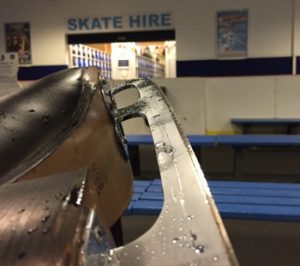
Should I get my blades cut at the rink or elsewhere?
Well, that all depends on how well they sharpen blades at the rink. I have had some mediocre sharpenings at my rink. That’s not to say that all rinks are the same. I’m sure there are some rinks that sharpen blades very well. Some rinks have specialist skate stores attached to them. But in my experience, my nearest two rinks haven’t done that well when it comes to sharpening ice skates.
I’m not sure what it’s like in the rest of the world, but in the UK there is always someone that lives not too far from the rink that sharpens skates more professionally. Sometimes it’s a registered ice skate dealer, sometimes a coach and sometimes someone that just sharpens ice skates for a living. They always tend to have some makeshift workshop in an outbuilding or garage where they are all kitted out to sharpen blades and maintain ice skates. In my experience these type of people are normally better than the
rink. More often than not, they don’t advertise. Their services pass from word of mouth, from one skater to the other by recommendation. Ask around where skaters near you are getting there skates sharpened and what there experiences were. When you find a good person to sharpen your skates, you tend to stick with them as your trust if their skill grows.
Can my coach help with sharpening my blades?
Yes definitely, coaches almost always have some inside knowledge of the best places to get your skates sharpened locally. They often have connections and telephone numbers of people you can contact to sharpen your skates. Your coach can also have a look at your blades and give you a good idea of whether they need sharpening, though only you know how they feel, a coach can give you a good idea until you learn the feel.
How much does it cost to get blades sharpened?
Well in the UK it costs me between £5 and £8 which is around $6.50 – $10.50. It does very depending where you go, but sharpening of blades remains one of the less costly areas if ice skating.
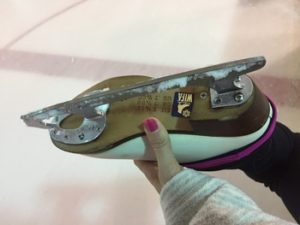
How can I tell when my ice skates need sharpening?
There are some tell tale signs that your ice skates may need sharpening. The main one is feeling the blade slip sideways when you skate. It starts when you are cornering at speed or generally putting sideways pressure on the blade. In the beginning you can feel the tail of the blade slip out, then as it starts to get worse, feel it slip out under the heel, well, I do anyway. Then for me, when they get really blunt they are sliding out all down the length of the blade. You really need to get them cut by then, in fact ideally well before then.
You can also tell by feeling the blade (be careful! Feel across the blade, never run your finger down the length of the blade or you may cut yourself), if its sharp you will feel the edge, if its blunt, the edge will feel smooth and a bit rounded off.
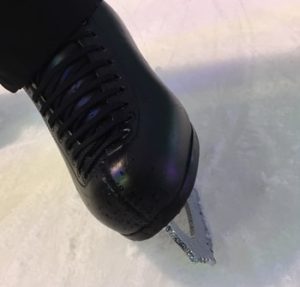
How do sharp blades affect my edge work when ice skating?
Not as much as you think. Yes sharp blades do affect your edge work, but not as much as you think. I have heard a lot of ice skaters blame there blades for poor edge work. The ability to skate a good edge, depends on body position, weight over the blade, a physical and mental commitment to the edge. Yes reasonably sharp blades are important, if you don’t have them you will slide off the edge. But just as important is good technique. If you were to give your blunt blades to your coach to skate with, would they be able to skate a better edge. Yes probably. So yes it’s very important for quality of skating and for safety to maintain your blades. But it is also important to have good technique. It is the combination of both, that make for good edge work when ice skating.

